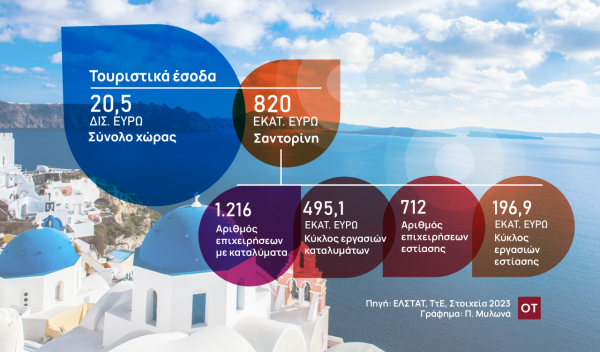
The number of jobs lost in Greece, in 2020, reached 429,900, according to a survey by the GSEE (General Confederation of Labor) Labor Institute, with full-time jobs lost as a percentage of the workforce reaching 10.7%. It is worth noting that the trade, food service, accommodation, and transport and storage sectors have the highest unemployment and volatility rates.
With the exception of the third quarter of 2020, the unemployment rate increased significantly, from 34.4% in the fourth quarter of 2019 to 39.4% in the second quarter of 2020 and 37% in the fourth quarter of the same year. On the contrary, the unemployment rate in manufacturing shows an improvement, although marginal (decrease by 1.5% in the fourth quarter of 2020 compared to the same quarter of 2019). However, this does not change the fact that the manufacturing sector continues to show the second highest unemployment rate, which is steadily above 10%, while in other sectors the rate does not exceed 7%.
Equally important is the fact that the pandemic crisis did not have the same effect for all age groups. Those most strongly affected were those in the age groups 15 to 19 and 25 to 29. Another particularly negative element is that this development is closely linked to gender, as the unemployment rate is much higher for young women. Specifically, in the fourth quarter of 2020, the unemployment rate for women aged 15 to 19 exceeded 70%, when in the first quarter of the same year it was equal to 35.6%. The increase was also large for women aged 25 to 29, with the unemployment rate rising from 25% in the fourth quarter of 2019 to 33% in the fourth quarter of 2020.
Reduction of working hours
At the same time there was a reduction in working hours for a large percentage of employees and at the same time an increase in overtime work for a smaller segment. The percentage of people who worked between 40 and 47 hours on a weekly basis decreased from 90% of employees in the fourth quarter of 2019 to 60% in the fourth quarter of 2020. For the same period, the percentage of employees who worked less than 39 hours was 20%, while those who worked more than 48 hours 10%.
From there on, due to the current situation, the demand for part-time or part-time jobs decreased marginally, since in 2020 51% of new jobs were full-time. It is noted that in 2019 the percentage was equal to 49%. This increase on the one hand, is too small to show a change in the trend of strengthening flexible employment in recent years and on the other hand it should be considered cyclical, since during the pandemic companies with high part-time employment rate were hit harder.
Part time employment
At the same time, however, the percentage of people working in part-time jobs has increased, although they would like to work regular shifts, but did not find full-time positions. The increase was marginal since from 61% of all part-time workers in the fourth quarter of 2019, the percentage rose to 61.6% in the fourth quarter of 2020. However, looking at the percentage per age group, it appears that the greatest pressure there is on people 30 to 64 years old. Between the fourth quarter of 2019 and the fourth quarter of 2020, the percentage change exceeded 2.5%. More simply, 6 out of 10 part-time workers (of whom 4 are over 30) would like to work full-time but could not find a full-time job. Therefore, in the pandemic, older part-time workers had fewer opportunities to work full-time.
Wage drop by 2.5%
In Greece, the average gross salary decreased by 2.5% compared to 2019, being the fourteenth worst performance in the Eurozone. This development did not affect the purchasing power of the average wage in Greece, as in 2020 it remained stable in the same position as in 2019. Despite the fact that the tax burden in Greece is low to medium, the net average wage also has a low to medium purchasing power, surpassing that of some of countries in Eastern Europe and Portugal.
Given the limited change in employment, the drop in wages is due almost entirely on the reduction of hourly wages. In total, wages decreased by 4.5% in the second quarter compared to the same quarter of 2019, while, although smaller, the decrease continued in the third and fourth quarters. However, it should be noted that there is a large heterogeneity in terms of negative wage pressures in different industries.
Wage Inequalities
The sectors in which wage reductions were most pronounced were agriculture, manufacturing, construction, trade, food service, housing and transportation, as well as the arts and entertainment. In particular In the last sector, the decrease is continuous due to the prolonged suspension of business operations, exceeding 8% in each quarter. The big drop in the broader sector of trade, food service, accommodation and transport was also expected, especially in the second and fourth quarters (-11.2% and -5.1% respectively). In agriculture the reduction of wages was not of the same magnitude, but became more intense in the fourth quarter, while in manufacturing the drop in wages has been almost constant from the outbreak of the pandemic onwards. On the other hand, the very large increase in salaries in the fourth quarter in the sectors of communication and information, and financial and insurance activities is impressive.
Given that wages in these sectors are relatively high, there is a strong possibility of strengthening the two extremes in the income ladders. If this polarization is confirmed, it will boost income inequality, as middle incomes will be squeezed. The latter element becomes more important if one takes into account that income inequality is already high. In 2020, the pandemic crisis may not have significantly changed the distribution of employees, but there is already a very large concentration in the lowest income brackets. Specifically, between 2019 and 2020 the changes in the income scales were marginal, such as, for example, the increase in the percentage of people receiving from 701 to 900 euros and the decrease in those receiving less than 500 euros on a monthly basis. It is noteworthy that the largest number of employees I found in the ranges 0 to 500 euros and 701 to 900 euros.
Latest News

Greek Tax Authorities Target Tax Evasion via Lifestyle Audits
Audit teams use advanced algorithms and risk analysis to conduct lifestyle audits and identify taxpayers suspected of concealing undeclared income.

Giannis Antetokounmpo Invests in AI Video Production Platform
The platform, founded in 2021 by Victorien Tixier and Xavier Green, automatically tags and organizes content, allowing teams to speed up distribution to broadcasters, sponsors, and even the athletes themselves

Greece’s Industrial Production Rises 5.8% in December
For the entire year, the average General Index of Industrial Production increased by 5.2% in comparison to the corresponding period in 2023.

Study Shows Athens Traffic Congestion Up
On average, car drivers and their passengers who venture out onto Greater Athens’ roads will spend roughly half an hour in the vehicle to cover a distance of 10 kilometers

Judge Blocks Elon Musk’s Team from Accessing Treasury Payment System
Judge blocks Elon Musk’s team from Treasury access over security risks and potential misuse of federal payment data.

Make Europe Great Again in Madrid
Far-right leaders rally in Madrid to 'Make Europe Great Again

Seismologists Cautiously Optimistic as Aegean Earthquake Activity Evolves
Seismologists grow increasingly optimistic as Aegean earthquake activity shows signs of decline

Earthquakes Continue to Shake the Cyclades, Experts Monitor Declining Activity
Ongoing earthquakes rattle Greece's Cycladic islands, but experts believe activity may be slowing.

Santorini Earthquakes Might Affect Greek Tourism Revenue: NBG Report
The areas directly affected by the tremors account for approximately 4% of both the country's annual tourism revenues and the total annual turnover in the accommodation and food service sectors

Greek Trade Deficit Surges to €34.6 Billion in 2024 Amid Export Decline
Conversely, numbers indicate that exports declined, totaling to 49.90 billion euros in 2024, down from 51.02 billion euros in 2023 marking a 2.2% decrease.


![Ηλεκτρική ενέργεια: Αυξήσεις στα τιμολόγια Μαρτίου δείχνει το ράλι του φυσικού αερίου [γράφημα]](https://www.ot.gr/wp-content/uploads/2025/02/shutterstock_679399249-90x90.jpg)



























![Επανεξέταση καταλογιστικών πράξεων της φορολογικής διοίκησης [Β’ Μέρος]](https://www.ot.gr/wp-content/uploads/2024/12/taxes-scaled-1-600x429.jpg)







![Επενδύσεις: Πόσο στηρίζουν το ελληνικό ΑΕΠ – Τι δείχνει μελέτη της Alpha Bank [γραφήματα]](https://www.ot.gr/wp-content/uploads/2023/12/ot_artificial_ependyseis-600x352.png)

 Αριθμός Πιστοποίησης Μ.Η.Τ.232433
Αριθμός Πιστοποίησης Μ.Η.Τ.232433